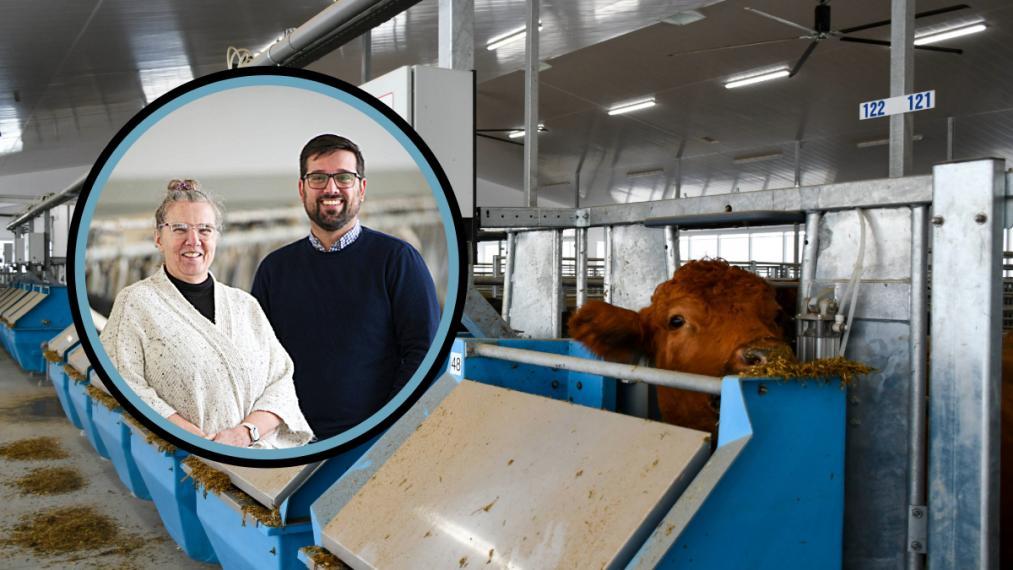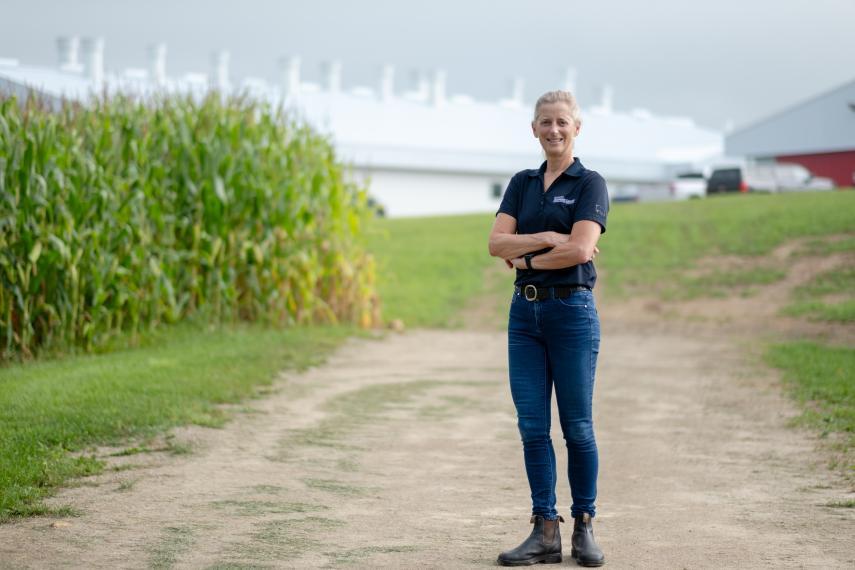
Impact Stories
Showcasing the success of Partnership programs and research

Article in Milk Producer Magazine showcases innovation at the Ontario Dairy Research Centre
Ongoing investment is delivering producer-focused results for Ontario dairy farmers.
Read about how the Ontario Dairy Research Centre is helping Ontario producers through innovations like High Immune Response (HIR) technology, the development and testing of a two-part pain management approach for disbudding, and long-standing studies of methane emissions to yield climate-friendly dairy cattle.
Helping dairy producers reduce methane emissions through bull selection
Farmers who want to produce a lower methane allocation in their milking herd within three years need to take bull selection into account this year, says Drew Sloan, Vice President for Corporate Development at Semex, addressing the recent EastGen AGM in Elora.
U of G students one step closer to winning Deep Space Food Challenge; demonstrate plant-growth chamber for Canadian Space Agency
The U of G Canada GOOSE (Growth Options for Outer Space Environments) team is made up of students and staff from the Ontario Agricultural College with members from the Interdisciplinary Design Lab, College of Arts and their external partner from Noki Farms (Guelph).

Moving the needle: Evaluating the use of needle-free injection technology in piglets
Dr. Terri O’Sullivan believes swine farms are missing an opportunity for using needle-free injection technology in young piglets. The technology – with potential economic benefits for producers and welfare benefits for animals – has been available for some time but has not been widely adopted in Ontario hog production.
![]()

Animal Health Laboratory develops swine virus tests to protect Ontario livestock
Large animal veterinarians rely on the University of Guelph Animal Health Laboratory (AHL) for reliable test results that help identify the cause of disease signs in Ontario’s livestock.
Twice this year, AHL diagnosticians tested samples that were negative for the common culprits, prompting further investigation that relied on their disease expertise, experience and detective skills.
Livestock research centre tours improve understanding of agriculture industry
In September, a group of urban food influencers joined Farm and Food Care Ontario for a tour of three of Ontario's agri-food research centres in Elora: The Ontario Dairy Research Centre, the Ontario Beef Research Centre and the Soil Health Interpretative Centre at the
Rural strong: Retiring U of G researcher reflects on the value of long-term research making a difference in Ontario
Despite retiring from his academic position, University of Guelph professor Dr. Wayne Caldwell continues his decades-long work to support rural Ontario and the people who depend on it.

Dr. Wayne Caldwell

Biocomposites make vehicle manufacturing greener
Plastic has helped the automotive industry trim millions of kilograms of fuel-wasting weight from vehicles and keep production costs in check. But as the spotlight falls on other environmental aspects of car and truck manufacturing, the University of Guelph is showing leadership in creating eco-efficient materials that can further reduce costs and waste.
Farmers Mental Health Program Developed By U of G Researchers Awarded Provincial Funding
A mental health program for farmers, created by experts in the Ontario Veterinary College at the University of Guelph and funded by the Alliance, has received $385,000 from the Ontario government.